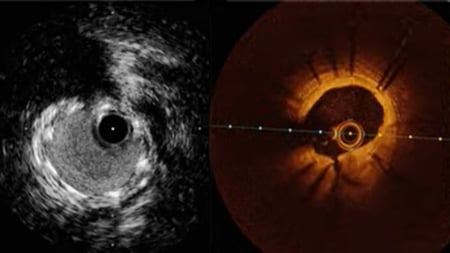Long-term safety of drug-coated devices for peripheral revascularisation
Selected in EuroIntervention by A. N. Calik
In this large cohort, there was no evidence of increased long-term mortality following treatment with drug-coated devices. Read the review to find out more.
References
Authors
Eric A Secemsky, Eric Barrette, Lindsay Bockstedt, Marc P Bonaca, Connie N Hess, Tim Hanson, Joao Monteiro, Bharati Manda, Robert W Yeh
Reference
EuroIntervention. 2020 Dec 22;EIJ-D-20-01018. Online ahead of print.
Published
December 2020
Link
Read the abstractReviewer
My Comment
Why this study? – the rationale/objective
Multiple high-quality prospective RCTs have documented the efficacy of paclitaxel-coated balloons (PCB) in improving primary patency and reducing the need for target lesion revascularization (TLR) when applied in the femoropopliteal artery for treatment of intermittent claudication. Moreover, current evidence supports PCBs' use to treat below-the-knee arteries in critical limb ischemia (CLI) patients due to their favourable effects in reducing the need for revascularization. However, recent meta-analyses that questioned PCBs' systemic safety for lower limb angioplasties found increased all-cause mortality rates in patients with the femoropopliteal disease and CLI patients with infrapopliteal disease.
Despite several limitations of these meta-analyses such as substantial degree of heterogeneity in patient and device characteristics, missing follow-up data of the included studies which are also unpowered to evaluate mortality, and lack of any potential causal links between paclitaxel use and deaths, utilization of paclitaxel-coated devices in daily practice have been significantly decreased.
As further evaluation apparently needed to clarify the issue, the current study sought to investigate drug-coated devices' safety in patients with femoropopliteal disease using real-world data.
How was it executed? – the methodology
This observational retrospective cohort study included Medicare Advantage patients who underwent femoropopliteal artery revascularisation procedures with a drug-eluting stent (DES), drug-coated balloon (DCB), bare-metal stent (BMS), or uncoated balloon (PTA) between April 2015 and December 2017.
The study population was divided into two groups according to receiving treatment with either a drug-coated device (DCB or DES) or a non-drug-coated device (BMS or PTA alone).
The primary outcome was all-cause mortality and was analyzed through December 31, 2019 (2 years after last enrollment).
What is the main result?
A total of 16,796 patients who were applied femoropopliteal disease revascularization were included in the study. The study population's average age was 73, and nearly half of the patients were female (44.4%). While DCB was used in 3,600 (21.4%) patients, PTA alone was preferred in 5,840 (34.8%). BMS was deployed in 6,529 (38.9%) patients, but DES was the stent of choice only in 827 (4.9%) patients. Both groups (drug-coated and non-drug coated) were similar in terms of demographic features and concomitant diseases.
After a 2.6-year median follow-up, the adjusted analysis results revealed that drug-coated devices were not associated with an increased risk of all-cause mortality compared with nondrug-coated devices (adjusted HR 1.03, 95% CI = 0.96-1.10; P = 0.39).
Similar findings were also observed for each drug-coated device type (DCB vs PTA: adjusted HR 1.00; 95% CI = 0.92-1.08; P = 0.96 and DES vs BMS: adjusted HR 1.02; 95% CI = 0.88-1.18; P = 0.78). Subgroup analysis in different age and sex categories, disease presentation (CLI vs other), procedure setting (inpatient vs outpatient), or burden of comorbidities did not find any association between treatment with drug-coated devices and survival rates.
Critical reading and the relevance for clinical practice:
The safety concerns raised for lower limb arterial disease treatment with paclitaxel-coated balloons and stents have substantially impacted daily practice. These devices are frequently used due to their favourable effects in reducing the need for revascularization when compared to their non-drug coated counterparts.
The drawbacks and limitations of the meta-analyses, which showed lower survival rates in peripheric arterial disease (PAD) patients treated with paclitaxel-coated devices warranted further evidence to clarify the issue. The difficulties of conducting randomized trials due to the need for many patients and long length of follow-up increased the importance of evidence coming from real-world data.
Following the growing body of evidence, the current study, which was performed using real-world data with a high-quality of mortality recordings, did not find any evidence of increased long-term mortality associated with drug-coated devices, both among all-comers and critical patient subgroups.






No comments yet!